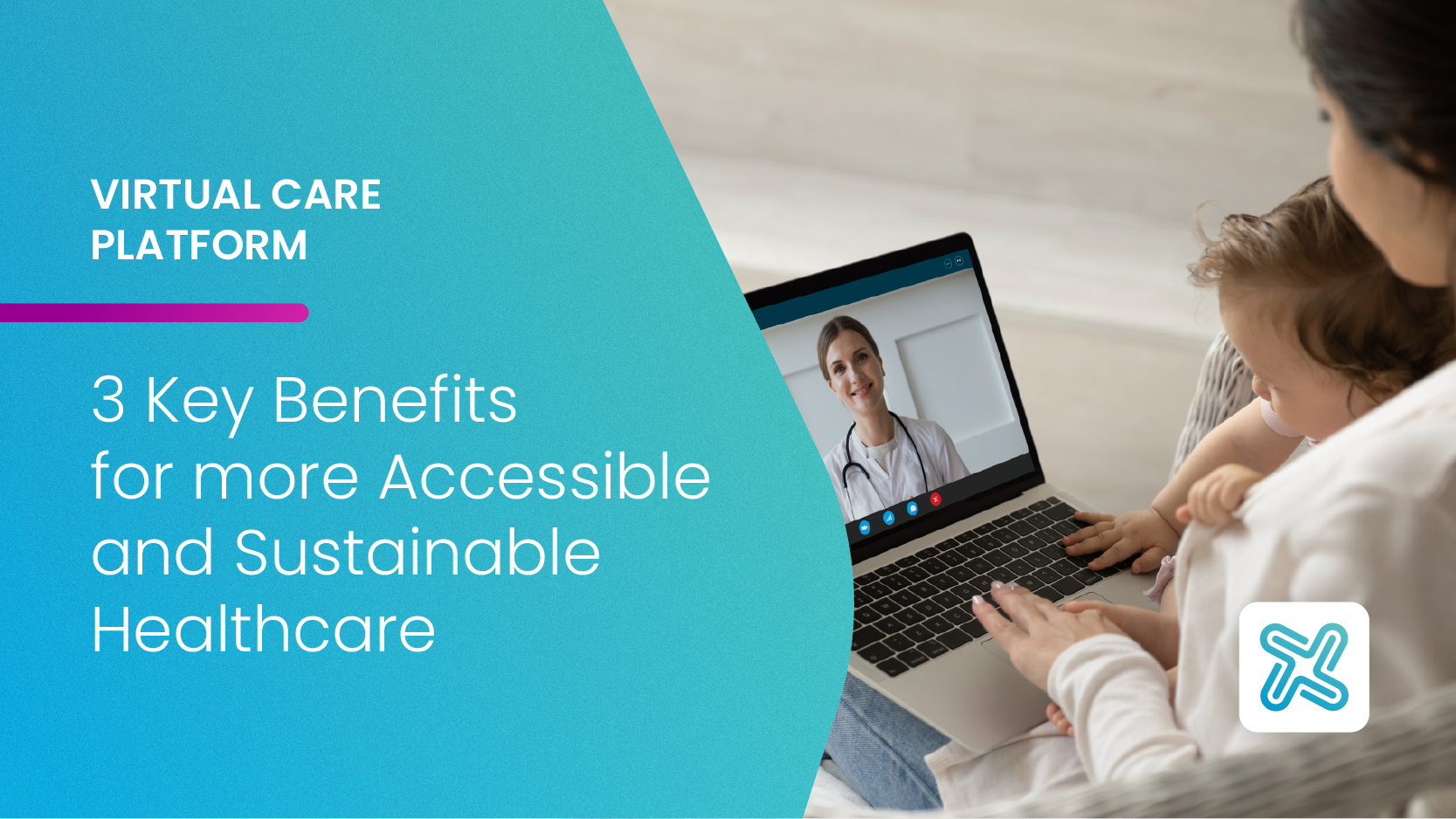Virtual care is helping improve access to care in Canada and beyond, offering an easy way for patients to find the care they need (when they need it). Both healthcare providers and patients alike have discovered the accessibility and sustainability benefits that virtual and hybrid healthcare delivery models provide.
Using a virtual care platform supports accessible and sustainable care for all by enabling:
1. Better Patient Experience
According to the Ontario Telemedicine Network’s Enhanced Access to Primary Care (EAPC) project, virtual and hybrid healthcare solutions increase accessibility to care, which improves patient experience, satisfaction, and, ultimately, outcomes.
A 2021 study found that a large percentage of Canadian healthcare consumers are demanding virtual care and digital access to their healthcare information:
- 82% want their prescriptions sent directly to their pharmacy
- 79% want access to their personal health information electronically
- 57% want access to care via secure email or text messaging
Patient interest in virtual healthcare delivery isn’t a post-pandemic reaction; demand has been growing for years. In fact, the 2018-19 EAPC project cited above found that 93 percent of patients felt telemedicine visits saved them time, while 92 percent believed it was more convenient than face-to-face care.
In addition to time savings and convenience, patients also enjoy filling out forms and questionnaires electronically from the comfort of their own homes. Using a virtual care platform to fill out digital forms rather than filling out papers in a waiting room is not only easier for the patient but also prevents paper-based questionnaires from being lost—not to mention that going paperless is more environmentally friendly!
2. Enhanced Access to Care
Access to quality healthcare is one of the primary social determinants of health. Virtual and hybrid care models improve accessibility by eliminating several barriers to care:
Remote Location
Although technology makes the world feel smaller, there are remote areas where residents don’t have accessible care and telemedicine is a literal lifesaver.
For example, consider the impact of providing a virtual care solution to isolated populations in Northern Canada where there are no roads, no phone networks, and no access to physical providers. Thanks to the Akinox Far North Project, more than 60 percent of the Québec territory gained access to virtual care.
Lost Income
Taking a trip to a physical doctor’s office is more than just an inconvenience for many workers. Most appointments require missing work—often without pay—and making alternative childcare arrangements, which can lead patients to delay needed care or critical diagnostics.
Data from Canada Health Infoway reveals that patients saved $105 per visit with virtual care compared with in-person care when factoring in time off work, transportation, childcare, and other costs.
Virtual care helps to reduce long waiting times—whether it’s at a family doctor’s office, walk-in clinic, or specialized healthcare center—to get patients back to being productive. This can help minimize lost income and productivity due to lengthy waiting periods.
Access to Affordable Transportation
Lack of access to reliable, affordable transportation can be a major barrier to receiving regular preventive and acute healthcare. Making routine checkups and treatment options available virtually helps eliminate this roadblock.
During the pandemic, a study of patients accessing virtual cancer care at the University Health Network in Toronto, Ontario, found savings of approximately $136-$142 per patient in travel and opportunity costs.
3. Improved Care Delivery
Canada’s healthcare system is experiencing a critical shortage in skilled healthcare workers. As a result, facilities and providers are struggling to meet demand for quality healthcare services.
By implementing digital health solutions, Canada’s healthcare system can reduce healthcare worker burnout, which will help with employee retention and improve care efficiency and accuracy, resulting in fewer errors and a better patient experience.
Integrating a combination of virtual and in-person patient care helps reduce some of the strain on the system by freeing up staff and beds, reducing costs, and improving both patient outcomes and sustainable care delivery.
For example, teleconsultations between providers prevent patients from having to be present from start to finish, improving care coordination and delivery. Instead, providers can connect with specialists to seek further advice on care plans and inquire about referrals without involving the patient in the back-and-forth behind the scenes.
Akinox Delivers Accessible, Sustainable Virtual Care Where It’s Needed Most
Akinox has been on the front lines of digital health delivery since the founders launched the Far North Project in 2010. We have continuously improved healthcare access, equity, and efficiency by implementing interoperability across technology systems, enabling providers to reduce wait times for visits, track and monitor patient wellness remotely, keep lines of communication open, and coordinate care across specialties.
Additionally, Akinox empowers patients by eliminating key factors that contribute to diminished access to care, such as location, transportation, and loss of income, and providing easy access to their records and lab results.
Our virtual care results are a testament to our commitment to bridging gaps in care, creating a better shared experience, and achieving more positive health outcomes.
|
70% dermatology teleconsults enabled diagnostic and referrals and prevented need for in-person visit |
+50% cost reduction to the health system thanks to teleconsults |
1400+ referrals handled via the platform (vs fax) |
*Since March 2022
Alexander Dahl, founder and CEO of Akinox, has a vision for the future of healthcare and the role of virtual and hybrid care delivery: “We must bring care closer to patients rather than patients to care,” he said. “Ideally, a patient-centered hospital would be a hospital without patients.
Have questions about our approach or our solutions? Book a consultation to learn more about how Akinox’s virtual care platform supports accessible and sustainable healthcare.

